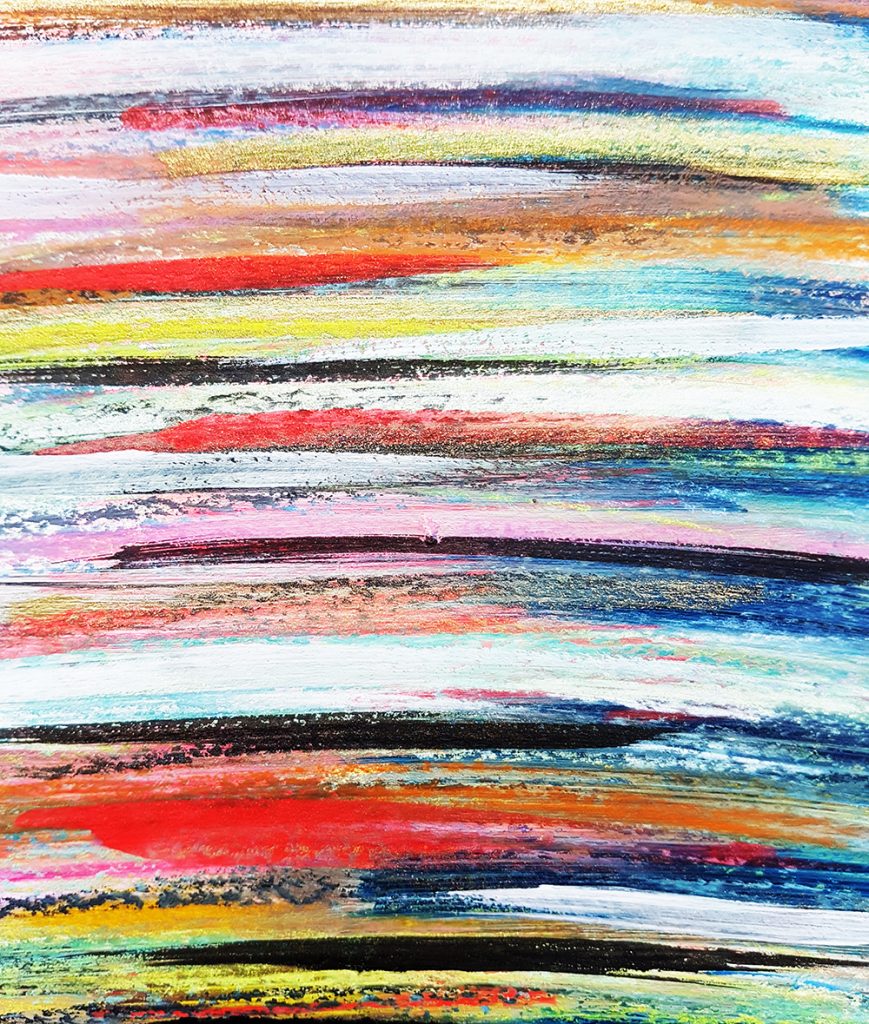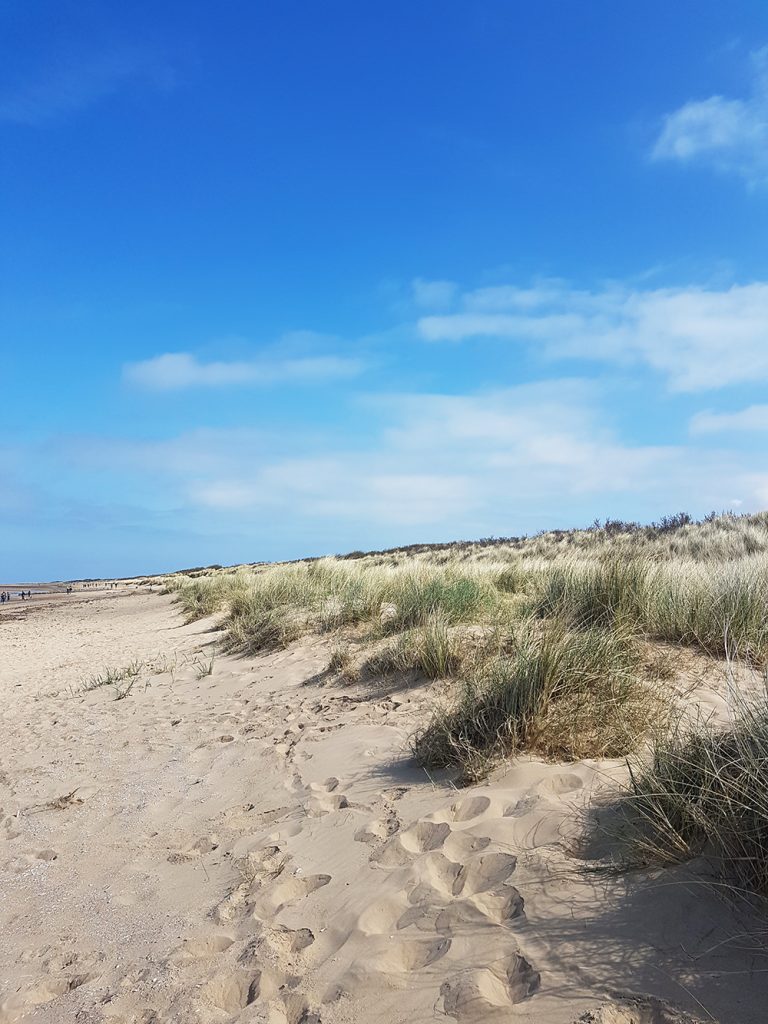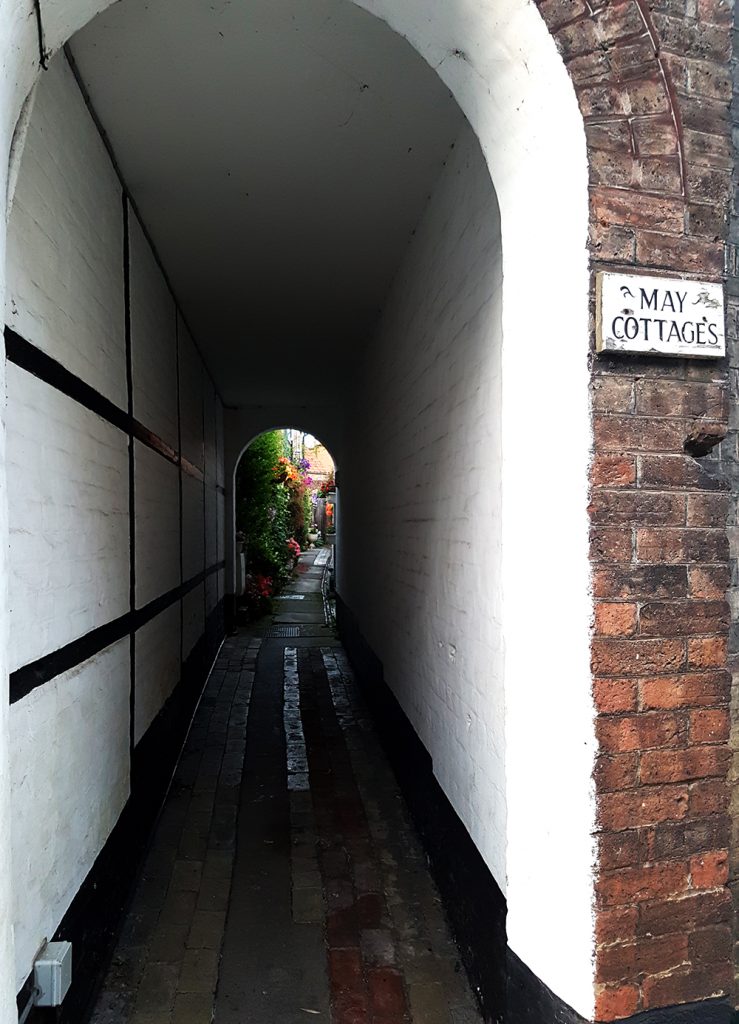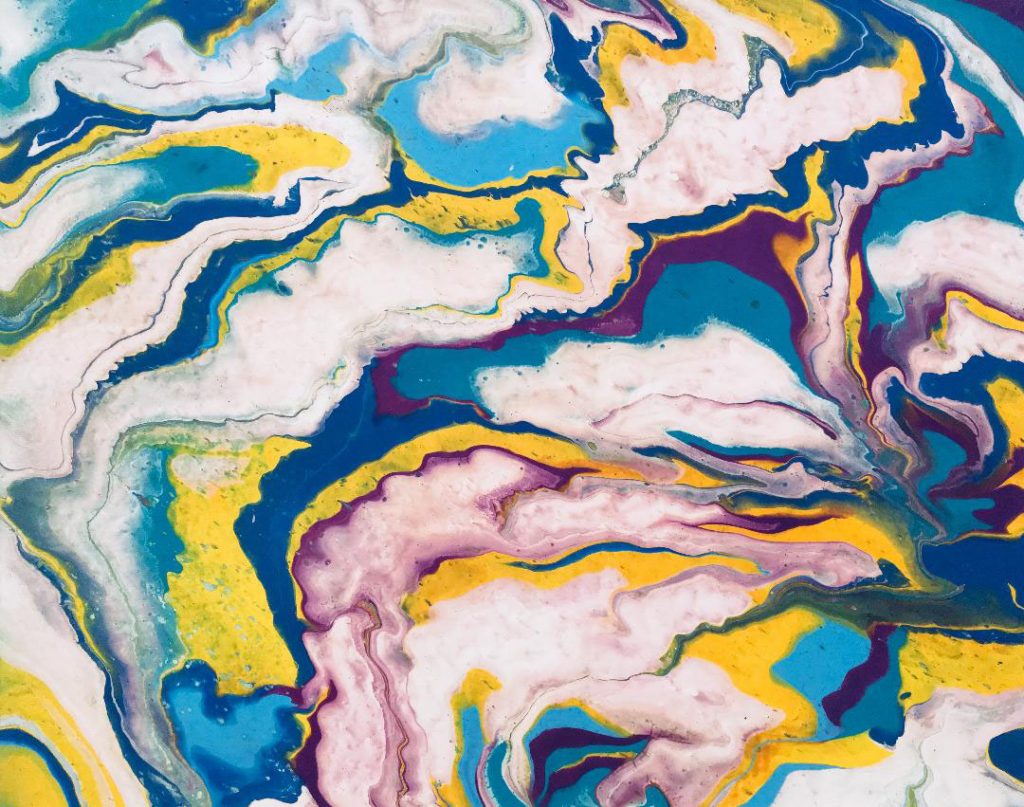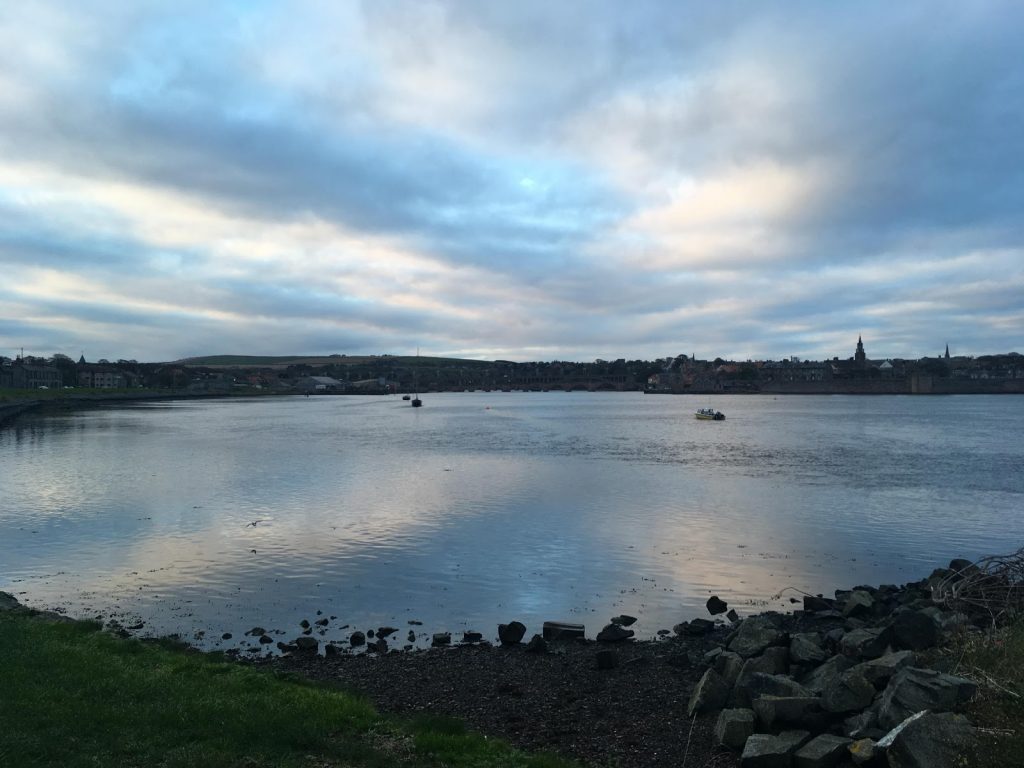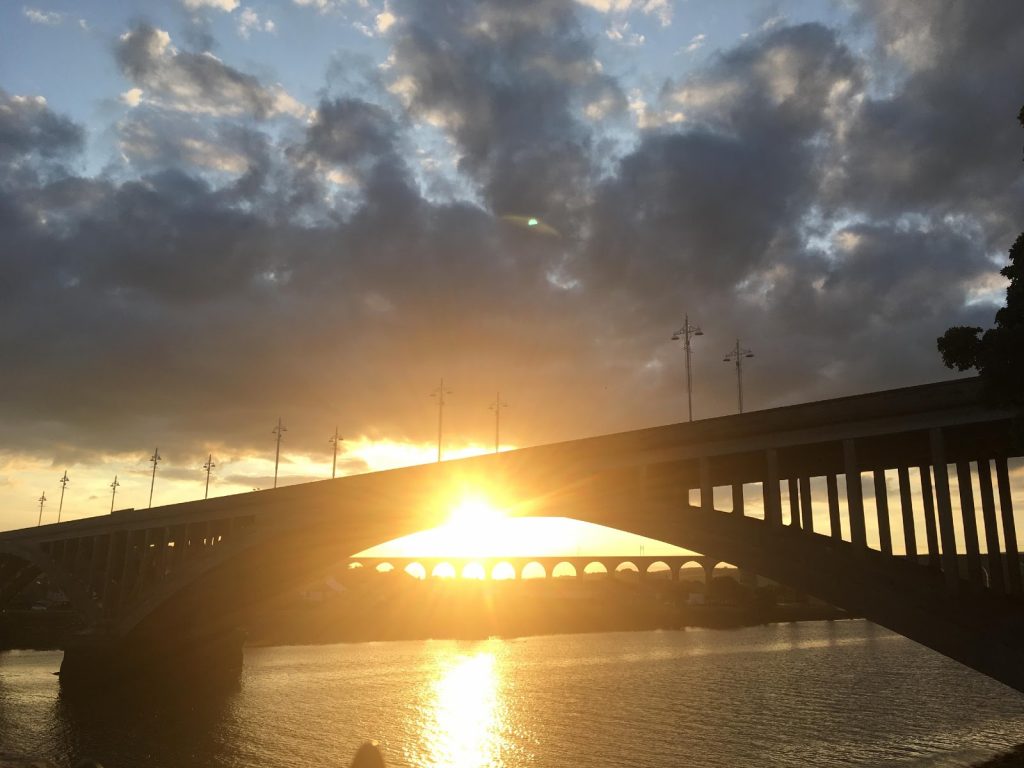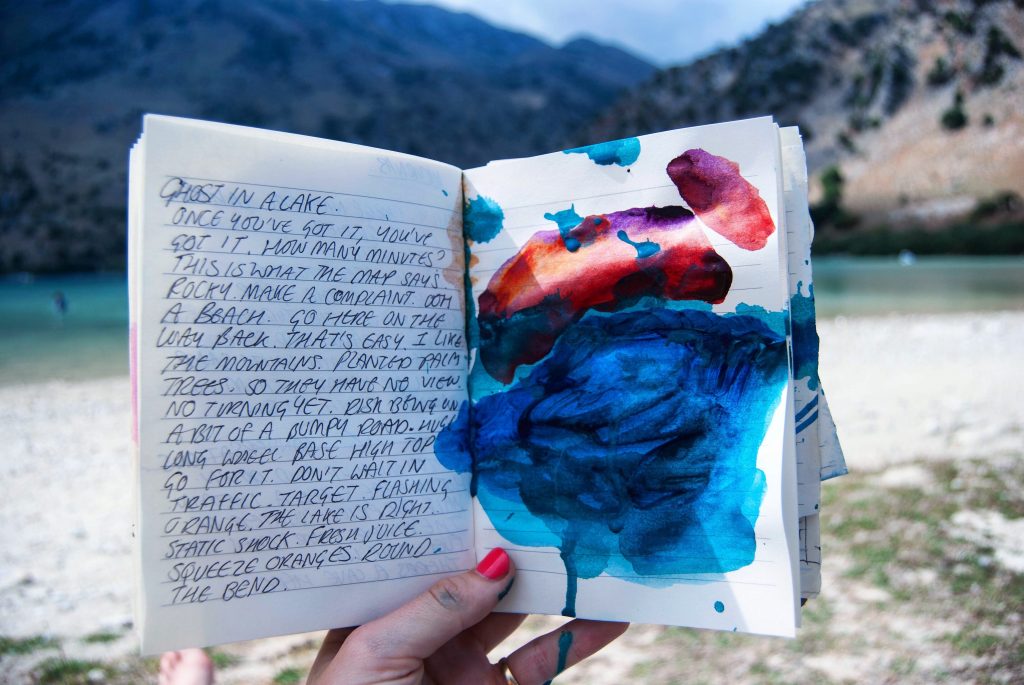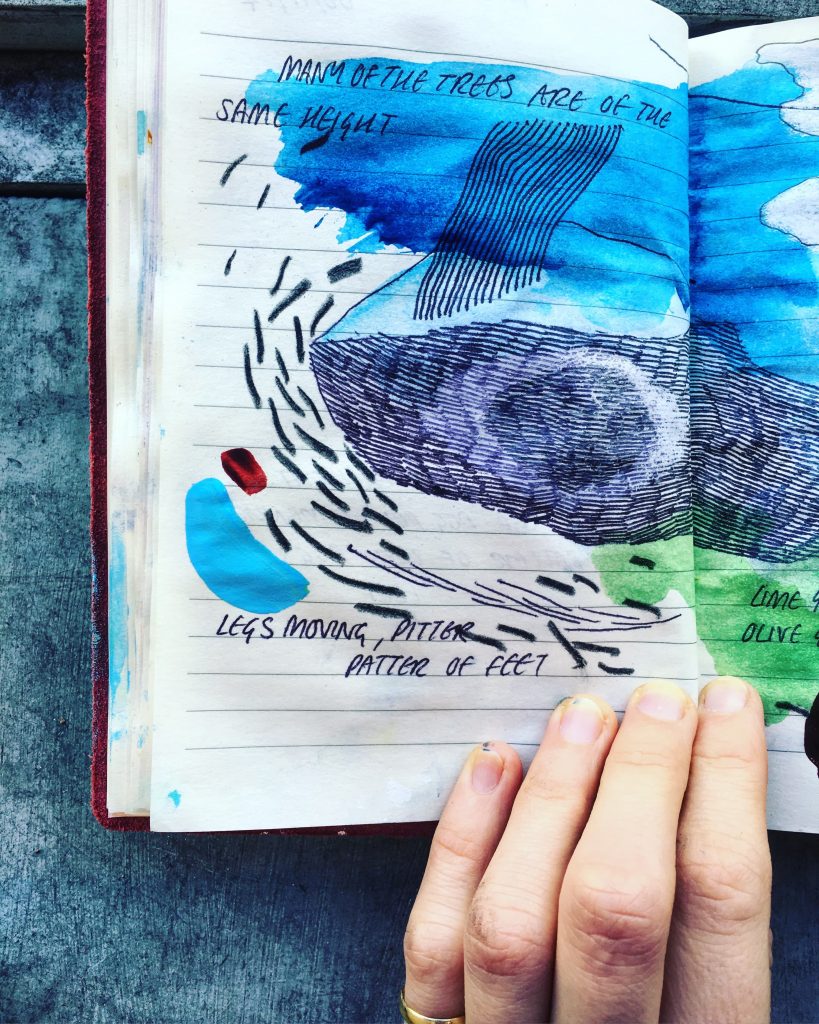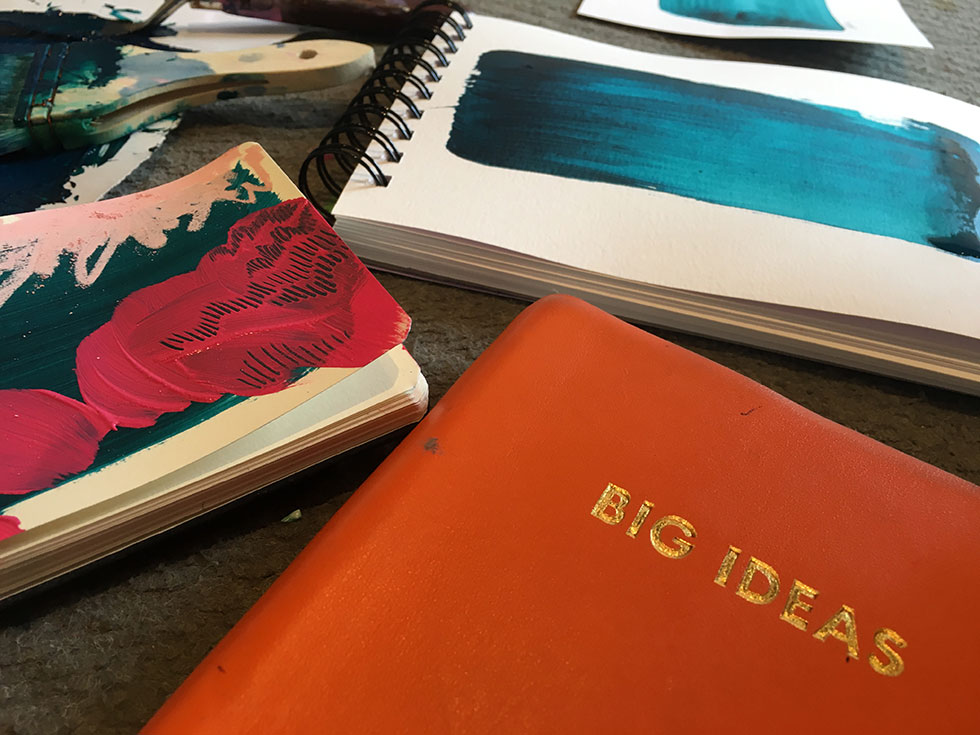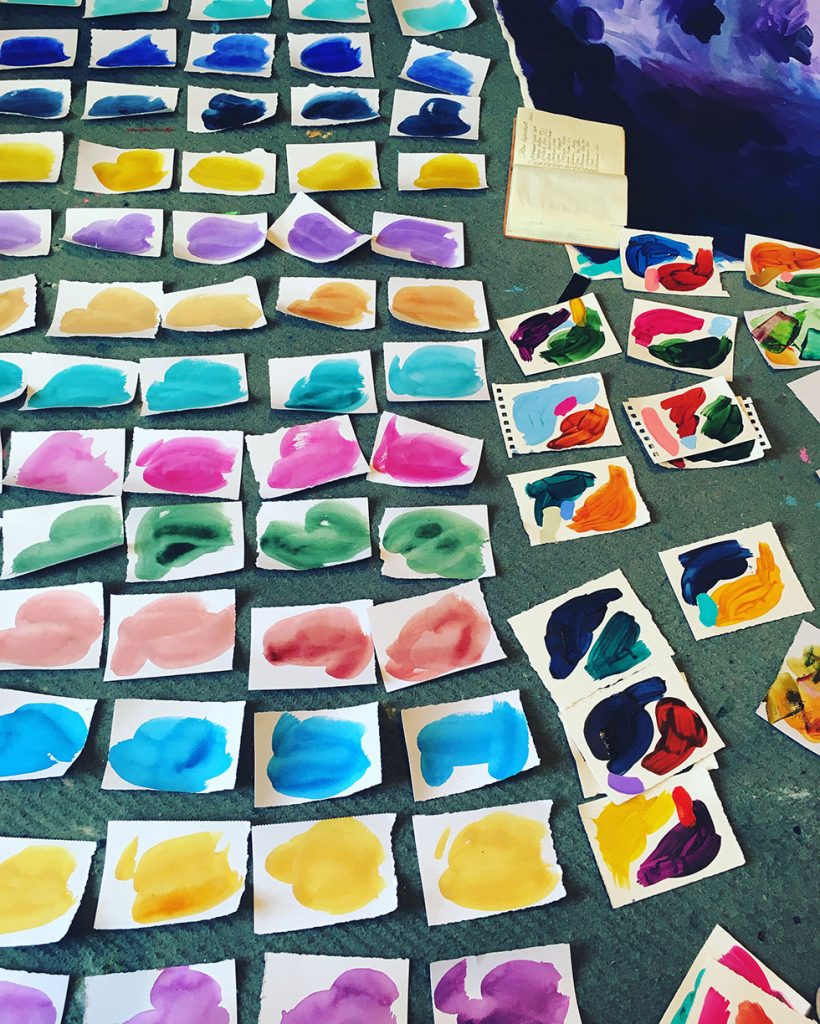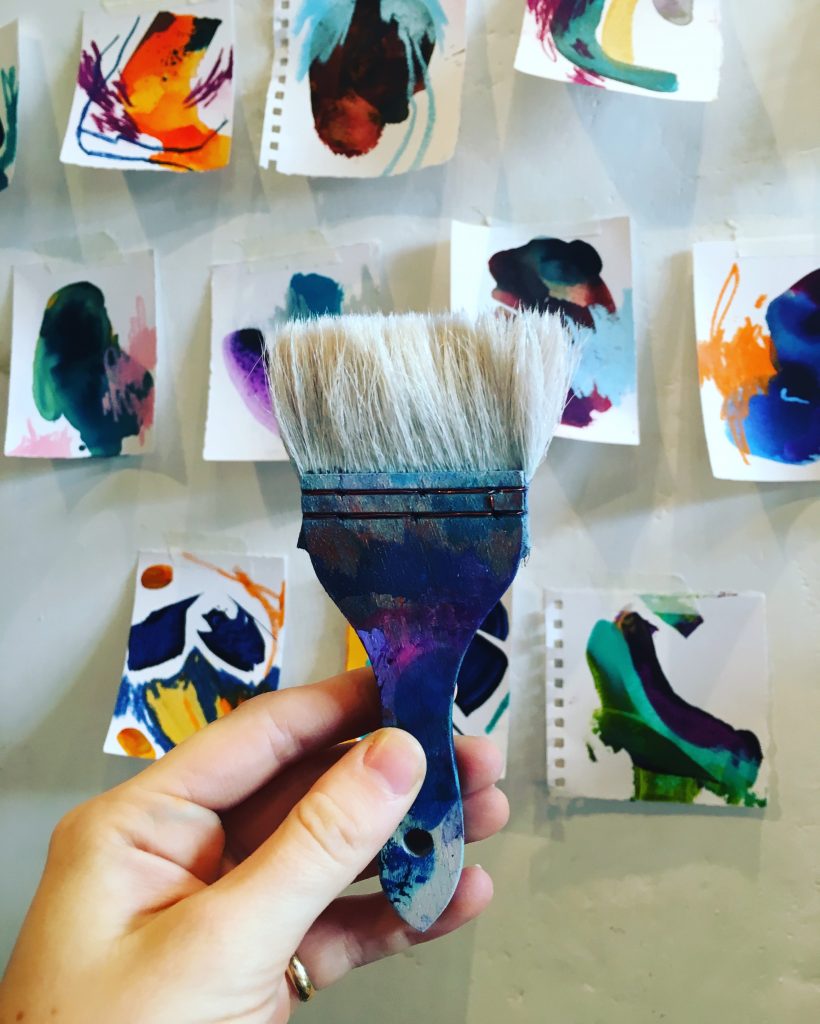Category:
Homegrown: Introducing My First Solo Show
June 22nd, 2018 by Emma
Firstly, a Thank You
I’m writing this with a smile.
When I was a child, my Dad and I would take frequent trips to Hobbycraft to top up my ever-expanding stockpile of paint brushes, watercolours, sketchbooks, stencils, candle-making kits, anything – you name it. I’d scavenge the shelves and get increasingly excited as I began conjuring up yet another arty project. Dad would be very tolerant of my Hobbycraft addiction – so much so, he’d feed it with hope of me staying creative, and happy.
If you would have told me 15 years ago that I was going to be collaborating with Hobbycraft for my first solo art exhibition, there’s no way I would have believed you. Their innovative and enthusiastic team have been ever so supportive over the last few months, and I will be forever grateful to them; not to mention, their array of high quality products that I still use on a regular basis.
Thank you for making this happen, Hobbycraft.
Introducing Homegrown
How do you perceive the world around you? What colours catch your eye? What sounds do your ears tune in to? Is a view simply a view – or is it an experience that stimulates your mind and senses?
When I fell into a hole of grief and depression after my Dad passed away, I didn’t care for any view. The world was a dark and tiresome place to live, and nothing felt, looked or sounded interesting. As a social recluse and hypochondriac, I struggled with the basic everyday, and my sense of ‘home’ felt broken; rock bottom had well and truly been hit.
Getting back into painting was the first step I made in the start of my healing process. With inspiration from old explorer books and other artists (past and present), a variety of styles and techniques have unfolded in my studio. As my courage and confidence grew with painting, so did my ability to step foot outside the house and explore the world again – and this time, it wasn’t taken for granted.
The more I’ve explored outside, the more my work has evolved. I’ve embarked upon adventures close to home – and with this, my glossary of marks and colours has expanded. Journals are used to document my findings – thoughts are written down, sounds are translated into marks, and colour combinations are swiftly mixed and archived.
The work in Homegrown is the harvest of these eighteen months of seeking and healing. It’s evidence of the new relationship I’ve built with life and everything it has to offer: weather, colour, sound, conversation, adventure and opportunity.
Within the works, a quick corkscrewed mark could be a sharp and chilling breeze or a sudden rush of enthusiasm. A block of colour is to catch your attention, evoke mood or to contextualise a location – perhaps land, sea or sky. Repetitive lines act as a meditative process, feelings of monotony or the structure of a setting – like the flow of a river, rows of shrubbery or the contours of rock.

Homegrown is an exhibition of painted adventures, revealing my significant shift in perception.
Let me take you on a visual adventure and show you where I’ve explored.
Please join me for the opening of Homegrown on Friday 3rd August from 7pm at Aroundabout Sound in Cheltenham, my hometown. RSVP.
Limited Edition Giclée Fine Art prints of pages from my journals are available at my shop.
Julia Cusworth: How Do You Adventure?
March 7th, 2018 by Emma
BIO
Hi! I’m Julia, an artist and designer living in the North of England; currently exploring my love of colour and pattern through abstract, mixed media work. I wish for all my pieces to brighten lives and bring joy!
Instagram handle: @juliacusworth
Website: http://www.juliacusworth.com/
Etsy Shop: https://www.etsy.com/uk/shop/JuliaCusworth?ref=l2-shopheader-name
Where is your home country?
Home for me is Norfolk, England
What is the name of your hometown?
I am from a small town called King’s Lynn
What are 3 words that describe your hometown?
Rural, enclosed and green.
Why is King’s Lynn fricking awesome?
I left my hometown when I was 19 but go back often to visit my friends and family. When I hear the Norfolk accent it’s like a warm cup of tea. When I see the flat countryside fields rolling out alongside the road, it has a familiarity that feels so right. I have never lived in my hometown as an adult so it is childhood nostalgia and hometime joy to me.
Where is the first place you go when you’re bored?
The seaside! Living 15 minutes away from some of the most beautiful, secluded beaches is a thing I miss constantly.
Where do you go to find natural beauty?
For a walk; a countryside walk in Norfolk means seeing for miles and miles and watching the sun set into the ground.
Where would you go for tranquillity and relaxation?
This is very bespoke, but to my grandparents garden. A jungle of flowers, fruits and trees that have grown and been loved for years. Again, it’s the nostalgia and familiarity of it all that means home to me.
How do you make the most out of where you are?
I try and squeeze in as much as I can when I visit home. At least one trip to the seaside, one walk through a field and countless hours driving down tiny, rural roads.
What are the top 3 things a visitor needs to do/go see in your hometown?
- Visit Holt or Holme, my favourite beaches
- Take a day trip to Norwich. Full of colour, creatives and old architecture (always the place I wish i lived when I was young!)
- Explore country lanes, extra points if you can find someone selling home grown fruits and vegetables
Where do you go for seriously good food?
My favourite place is a very traditional pub called The Hare Arms in Stow Bardolph. It has a pub cat, peacocks and amazing homemade comfort food
Huge thank you to Julia this. If you’d like to be featured with your hometown in my ‘How Do You Adventure?” series, please get in touch.
Beth Garner: How Do You Adventure?
February 19th, 2018 by Emma
Bio
A self-taught artist, I dived into the world of art after a difficult time in my personal life and began experiments in fluid painting; mixing various cocktails of house paint, gloss, acrylic, pva glue, water and washing-up liquid (anything goes!) Therapeutic and addictive, I’ve probably watched hundreds of art videos on YouTube and have found the Instagram community so uplifting and inspiring. I don’t believe there is ‘bad’ art and anyone can (and should) make art for whatever reason. After living in France, Germany and other parts of the UK for work and study, I have returned to the place I grew up, Berwick-upon-Tweed, with a new appreciation of this area. The ever-changing Northumberland skies and the oddities of light have inspired my abstract landscapes which explore and challenge light, colour, gesture and texture.
Instagram handle: @abstract.beth
Where is your home country?
England
What is the name of your hometown?
Berwick-upon-Tweed (in Northumberland)
How would you describe your hometown in 3 words?
Underrated. Peaceful. Home.
Why is Berwick-upon-Tweed fricking awesome?
I may be biased, but travelling by train from Newcastle on the east coast and arriving into Berwick is one of the most beautiful sights in the world. There are three bridges with their own stories to tell and a light that dances beautifully along the river and out to sea (commuters at sunrise and sunset can attest to this!)
Berwick-upon-Tweed may be small but packs quite a punch. Although the town changed hands between England and Scotland more than a dozen times, we finally settled in England in 1482 but our football team, Berwick Rangers, play in the Scottish League Two. There’s around 25,000 people living in the town and its surrounding area but with less than an hour by train from Edinburgh to the north and Newcastle in the south, we can enjoy the buzz of city life whenever we want.
Where is the first place you go when you’re bored?
A walk along the beach cures everything.
Where do you go to find natural beauty?
As above, the beach really does have it all and no two days are the same. The tide can be wild and ferocious one day then still and inviting the next. I often visit Paris and it is really humbling to come home to a vast horizon and the peace it brings.
Where would you go for tranquillity and relaxation?
Northumberland is one of the least densely populated counties in England meaning that you can go for a walk on Goswick beach or in the Cheviot hills and feel like you’re the only person in the world. If you do meet any locals though, we’re a friendly bunch! If you want to go a step further and literally be cut off, travel to Lindisfarne (Holy Island) which is attached to the mainland by the causeway – just be mindful of the crossing times!
How do you make the most out of where you are?
I try to go for a walk every day which admittedly can be hard when it is rainy and dark in the middle of winter. I have taken some pretty amazing summer sunrise photos which provide fantastic painting inspiration.
What are the top 3 things a visitor needs to do/go see in your hometown?
- Buy fish and chips (my favourite!) and walk along the Elizabethan town walls and pier – waving to seals is optional and if you’re lucky, you might catch a glimpse of the dolphins and porpoises in the warmer months.
- Visit during one of our festivals; take your pick from the Lindisfarne music festival, food and beer or film, media and arts which excellently showcase local talent, often in venues steeped in culture and history. Or just pop in to the Gymnasium Gallery or the barracks to see the latest exhibition.
- Enjoy some live music downstairs at The Barrels Alehouse and learn some local slang.
Where do you go for seriously good food?
The Maltings café has brilliant views over the rooftops and serves food all day. Newly-opened Mule on Rouge is a vegan-curious café and music shop on Bridge Street which has several restaurants serving locally-sourced dishes. Venture a little further afield to the Chain Bridge Honey Farm and have your afternoon tea and cake on an old double decker bus.
Huge thank you to Beth for this. If you’d like to be featured with your hometown in my ‘How Do You Adventure?” series, please get in touch.
The Recap: Redefining an Adventure
January 18th, 2018 by Emma
Happy New Year, Everybody! – I know, it’s a bit late into January to be saying that.. but oh well.
It’s now 2018, and I’m super excited to be writing again.
Let’s Recap
At the beginning of last year, I bit the bullet and decided to get back into painting as a way to deal with the loss of my Dad. Translating my emotions onto paper and canvas enabled me to get back in touch with reality; it genuinely made me feel a lot happier. So, I continued to paint a variety of abstract art collections and also maintained this blog, writing about life as an artist and ways to maintain a happy mind.
September came around and it had been a whole year since my Dad had passed away. And I’ll admit it, I fell into a hole of unhappiness again. Painting just wasn’t working any longer. I felt trapped in my studio and my creativity came to a halt. For most of the year, I was promoting happy art for a happy mind on my Instagram because I was happy and it was (mostly) because of the art I had been making. However, I put too many eggs in one basket. The day came when I tidied up my studio and gave myself freedom. I let myself back outside, where there’s fresh air, engaging sounds and you know, people.
A family holiday to Crete was the game changer for me. I wanted to press the reset button and that’s exactly what I did.
Blank notebooks, pens, pencils, pastels, paints, jars and brushes filled my suitcase. I didn’t want to force myself to be creative whilst I was away. I brought my supplies with me just in case I felt the urge to paint or if I found inspiration. I’d had various project ideas planned for whilst I was away, and I did carry them out- but unfortunately, I didn’t feel connected to what I was creating.
What I did end up connecting with were my blank notebooks, which became very not blank by the end of the holiday. On the plane home, I was doing my usual multi-tasking (I get it from my Mum) by reading Helen Frankenthaler essays at the same time as flicking through the notebooks I’d been painting and writing in. For the duration of the trip, I’d taken these notebooks around with me everywhere, writing down conversations, describing landscapes, making marks and colours to sounds and textures- I’d been documenting everything, creatively.
The books made sense to me. It was like I’d written my own dictionary of experiences. The pages were filled with my interpretations of the way I saw things, heard things and felt things. I had come up with my own language of adventure and experience, and I’m the only person who’d understand it. These books felt very special and quite different to the usual sketchbooks I’d use at home.
Once I returned, I dug deeper into this new process and continued to use notebooks to document life. By doing so, it motivated me to interact with the outside world more. My studio remained vacant but my car’s mileage was ticking as I drove places to interpret and translate into (even more) notebooks, which I now call my adventure journals.
I felt adventurous – driving to places on my own, allowing myself to get lost in the countryside, hauling my art supplies around and truly making the most out of the environment I was in. This may seem like a breeze to some, but for a long time, if you’ve read my story before, you’ll know that I couldn’t interact with the world. So, this was a big deal for me.
My reset button had most definitely been pressed.
Present Day
What do you consider an adventure?
I redefined what the word meant to me:
Whether it be long or short, near or afar, an adventure is a physical and mental process of looking, seeking, finding and collecting. When you go on an adventure, you’re capturing moments, making minutes count and living life to the fullest.
And this is what I do.
I explore my mind and my surroundings to make artwork that tells stories. Wherever I go, I take a journal with me to interpret, record and comprehend the environment I’m in. I make marks from sounds, blend colours from landscapes, put into words the textures beneath my feet and write down overheard conversations. I’ve discovered that creating art is my preferred method of communicating how I see, hear and feel. In doing so, I want to demonstrate to people that embarking on an adventure and feeling the bark of a tree is not only a physical process, but also a mental one.
This year kicked off with a collaboration with Hobbycraft. Have you read it yet?
Here’s to 2018. It’s going to get adventurous.
See what I get up to on Instagram.
6 Reasons to Buy Original Art for Your Home
October 26th, 2017 by Emma
Do you buy original art for your home or work space? If you do, that’s great – thank you for supporting our practice as artists. If you don’t, I’m going to talk you through a few reasons why you should.
1. It’s One of a Kind
When you buy original art, it’s a one of a kind- no one else has it.
Think of clothing- when you go to a party, the supermarket or wherever, it’s not ideal when you see someone else wearing the exact same outfit as you. So, why not take this ideology and apply it to the interior design of your home and/or office? Granted, it’s not embarrassing to have a mass produced art print hanging on your wall- I’ve bought many myself because obviously I can’t afford an original Frankenthaler or Picasso. However, what about original artwork that is within your budget? Nowadays, a lot of original artwork is really quite affordable, especially work by emerging artists that you typically find on social media.
Many artists, like myself, also offer commissions. A commission is a bespoke piece of art tailored just for you and only you. My process involves a lot of back and forth with my customer, where we talk about colours, themes, energy, emotion etc. in order to create the ideal artwork for their space and personality.
It’s pretty much impossible to recreate the same artwork again exactly, so having an original artwork hanging on your wall is pretty special.
2. It Sparks Conversation
This may not relate to everyone, but I think that having a beautiful piece of art hanging on your walls at home sparks conversation. Whether it be a guest, your parents, your children, whoever- behind every artwork is a story, a theme and a reason of purchase. When it comes to abstract art, quite often, people have varying opinions about what is seen/felt upon viewing the work, which I always find fascinating. Opinions of artwork always differ from individual to individual and in my experience, debates do happen. Heated or not, talking about art is still a great way to find out more about someone.
So, buy original art for your homes to open up minds, inspire and stimulate creativity!
3. It Brings a Room Together
So, this one is a bit of an obvious one and the reason why a lot of people prefer having commissioned artwork- it brings a room together and provides an instant colour palette. When you move into a new home or you redecorate your house, you have a variety of things to think about- design wise. What about the colour of the walls, the curtains, the sofas and the cushions; the layout of the television, the mirrors, the side tables and the lamp? There are many things to consider when you’re trying to make your home a more beautiful place to live in. Having an original artwork as a statement piece in any room can quite often be the cherry on top of the cake- whether it’s added in first or last. Give it a go- have a look around your home and see whether you find a wall that is crying out for a colourful/large/small/emotive piece of artwork.
4. It Personalises Your Home
Just like how we dress ourselves or how we wear our hair, owning original artwork can be how you style your home. Sure- you may have a print of Gustav Klimt’s “The Kiss”, a poster of The Rolling Stones and a family photograph up in your house (which is perfectly fine), but what about a real painting, with tangible textures and vibrant colour. You can chose an original artwork that not only matches your living room to bring the colour scheme all together, but also one that reflects your personality, whether it be dark and gloomy, peachy and floral or explosive and alluring- your style, your home, your choice.
Having artwork up at home can also be very beneficial to your mood and mindset. When you view your artwork, you may experience feelings of happiness or provide you with a moment of zen after a stressful day, it may also make you feel proud if it was something you saved up for and treated yourself with.
5. It Supports an Artist’s Practice
This is an important one.
You know when someone is good at mathematics and they become an accountant, or fantastic with their hands and become a mechanic? Well, us artists are born with a need to create, our ‘talent’, if you will, is to express ourselves, to put paint onto surface and to make things. The problem is, a lot of us are unable to translate our talent into earning income. I can’t tell you how many times people have said ‘..and what else do you do?’ after I’ve told them that I am an artist. Unfortunately, quite often it’s not acknowledged as a ‘proper job’ and many people resist spending money on our work, especially when it’s abstract, the ‘easy’ work that ‘looks like a child did it’. Abstract art is very misunderstood and sometimes, I feel that we have to work even harder to find people to purchase work of this kind- it’s crazy!
This needs to change. For us to be able to use our talent to earn money in the way we feel we are destined to, we need you to support our practice. We need you to help us top up our supplies, keep up with the rent of our studio space and to enable us to work. Yes, to work– just like how a hairdresser, a plumber, a doctor or a teacher would.
Musicians- they’re artists. Have you ever bought a CD or a song on iTunes? I’m assuming at some point you have. Well, buying music is like buying artwork. You’re not just paying for an awesome song to listen to, you’re also paying for the musician to continue their work. It’s the same for us- visual artists!
6. It could be an investment
A lot of money flies around in the art world. So, if you were to buy original art, particularly from an emerging artist, it could be a sound investment. The artist could very well go on to be a renown artist, which in turn makes the artwork you have bought a lot more valuable. Obviously, there is no guarantee that this will happen but it would be worth keeping on the look out and following along with the journey of the artist’s career because you never know what might happen!
You can view my original artwork here.
Catch-25: A Weird Brain in The Art World
October 5th, 2017 by Emma
“I bet my brain is weirder than your brain”, said a customer yesterday, as I was running my Mum’s music shop. We were having a conversation about how all of us think differently and how life never pans out the way we imagined when we were younger. I didn’t know how to respond to what he said, so I just said, ‘who knows?!’
I’m 25 years old.
Why is it that when you’re a teenager, your twenties seem like they’re going to be easy-going and fun with a clear path of how your life is going to pan out? (Well, perhaps this is just how I felt.) When you’re in your twenties, wow- you’re going to be so grown up and it will be a time where you travel the world, soul-searching, meeting new people, getting offered opportunity after opportunity, then finally landing your dream job, settling into a grind you’re super comfortable with. Hey, perhaps you’ll even meet the love of your life along the way, elope in a tropical island and start thinking about the ‘baby’ word. Hah- I think not. My 15 year old self would be beside herself if she knew what being in her twenties entailed!
OK- it’s not all bad. I still get asked for ID when I buy a lottery ticket, so at least I still look 15. Then again, perhaps this isn’t a good thing..
Granted, many people, a couple of my friends in fact, have indeed done the travelling, settled in a good job and (I assume) are enjoying the grind of life. It is possible. But I can’t help but think about where I’ve gone wrong. Well, is it wrong – or is it just different?
BEING HONEST WITH MYSELF
After talking with a friend, who is also a creative/artistic/perplexed type, I’m starting to realise that perhaps my life isn’t going the way I planned because of the way my brain is wired. It’s as if my brain is it’s own ‘catch-22’- I’m very idealistic, I have all these dreams and goals that I set myself but I’m too self-critical to do anything about them. Before I start walking down the path to these ‘unrealistic’ goals, I stop myself before I’ve even put my shoes on. Instead of just snapping out of it and getting on with the tasks at hand, I question my ability to the nth degree. I can’t do it. It will take too long. I’m not good enough. So, nothing gets done and life stays the same.
Hold on, it gets a little more complicated.
I then get fed up of life staying the same and can’t understand why it doesn’t change. The answer is written right here in front of me and yet, I still don’t understand why I’m in my mid-twenties with not much progression. I’m troubled with my own intellect and stupidity all at once. I’m analytical, able and dedicated in my approach of setting goals and imagining the endgame, but then become blank, careless and doubtful about the actions that are needed to be carried out to get to these goals. On top of this, if I do start a task, my impatience leaves me unsatisfied with the length of time it will actually take to complete.
Unfortunately, this brain wiring doesn’t bode well with a career in the art world. The art world is a very competitive, scary and difficult place to succeed. Quite often, galleries won’t even consider you if you don’t have an MA, multiple press features and numerous residencies under your belt, regardless of how ‘good’ or ‘innovative’ your artwork is.
On a personal level, I find this really hard to deal with. Due to my past indecisiveness and self-doubt, I’ve accumulated a student loan of over £40,000. This isn’t so much of a big deal because the pay back methods are quite chilled out here, but what it does mean is that I’m unable to apply for any other student-type loan. So, a Masters will only happen if I spend a year or so working to save for it. Granted, this is how most people get themselves through a Masters degree but I struggle to even envisage working 9-5 sat behind a desk or till any more than I already have. It’s a catch-22 all over again.
From recent experiences, I’ve learned that life is way too short to be unhappy in your everyday. When I look back on the days of working in retail, with the constant clock watching and longing to get home- that isn’t a life I want to live. I totally get it- woe is me! These are first world problems and to some degree I just need to suck it up and work like every other person to put food on the table and save for life things. However, there’s been something in my brain that hasn’t let me do it. My subconscious hasn’t allowed me to make decisions that cause me any unhappiness. Instead- I’ve just sat, daydreaming and longing for this life as a renown artist, expecting opportunities to be thrown at me from all directions.
Now, there’s nothing I want more than to work super hard in the right direction. But- what direction?
ASKING THE IMPOSSIBLE
I’m sat here now, at what was my Dad’s desk, thinking about what he would do if he was me. It’s hard to tell- the amount of times he told me to quit my jobs in retail because of how unhappy they made me and the amount of times he told me to work for myself, it’s hard to know what to do. I’m asking the impossible now, but how do I get to where I want to be without sacrificing my happiness for one second? It’s taken me so long since my Dad passed away to get this happiness and I don’t want to let go of it. Sure, I’m not happy all the time- obviously. I still get very emotional about Dad, frustrated with my progress in the gym, angry at the news, jealous of other artist’s studio spaces, heartbroken about not being able to attend a certain exhibition in San Francisco and unsatisfied with the tasteless stir fry I just made- life can’t be happy all the time. But one thing I can control, is the happiness I feel in my everyday job.
Over the last few months, I’ve been making and selling artwork, which is great. But I want to dig deeper. I’m going to start fresh and make more of an effort to immerse myself into the real world of art, to meet other artists, attend events and visit galleries more frequently. I’m heading to London next week, want to meet for a coffee and talk about art?
In addition, I’m going to start from scratch and push the reset button with my studio practice. Therefore, my studio needs to be emptied. Find marked down original artwork at my shop.
AN ADVENTURE ARTIST
Lately, I’ve been looking, listening, exploring and studying in order to develop a new process of making artwork. This artwork won’t just be medium on a surface, representing this and that, it will be artwork that is honest with an engaging disposition. In the past I’ve been selfish with my way of making artwork because I needed to be. Now that I’m on the other side of grief, where it’s less raw and more manageable, I’m now yearning to make honest artwork for myself and others.
For so long, I’ve taken where I live for granted. So, over the next few months, I’m going to hop in my Ford Fiesta (or Jon’s Audi when he’s acting as my chauffeur) and drive to places here in the UK, seeking colour, texture, sound and conversation.
With new adventures, will come new artwork and I’m labelling myself as an adventure artist.
Now I’ve just got to figure out how I’m going to actually do this.
Come on, brain. You’ve got this.
Upcoming Work: Project Crete
August 29th, 2017 by Emma
Can you believe that summer is almost over? The year anniversary of my Dad’s death is looming, the mornings are darker and cooler, and the leaves are just starting to think about changing their colours. Are you feeling disheartened about the end of summer, or are you super ready and excited for autumn?
Despite the fact that I think this year’s summer has gone by really quickly, I’m actually feeling pretty cool about it. Perhaps I feel this way because I have a holiday on the horizon..
At the end of September, my family and I are off for a long break to Crete, Greece. Naturally, I’m going to take full advantage out of this and lug my art supplies with me to do some serious fieldwork.
Over the last few weeks, you may have seen on my Instagram that I’ve been doing some extensive research and explorations of colour, marks and compositions. This is all in preparation for a new collection aiming to be released early in 2018 (most likely a bit later because there is a lot going on). It feels so invigorating to be busy- does that sound strange? I feel more energetic, more worthy and more alive. Those past months of nothingness have made me really appreciate being busy and having a mind that’s focused and on the ball 24/7.
So, all of this busyness in the studio is now going to transfer over to Crete in September, to make “Project Crete”.
PROJECT CRETE
This small project will be a stepping stone towards the evolution and development of the new collection (2018). It will be all about interpreting, gathering, documenting and experimenting. Across the 14 days, 14 artworks on spiral bound paper will be given life (and most likely a sketchbook of scribbles and a notebook of short essays). The blank paper will act as a sponge, soaking up the day just past- it’s colours, textures, sounds, smells and conversations. After the 14 days, the works will represent adventures, meditation and creativity experienced in the beautiful Island of Crete. Again, like the Happy Santorini collection, this project will be dedicated to mental health awareness because as always, creating artwork is one of the many things I do to keep my mind happy.
PREPARATION
At the moment, there has been a lot of colour going on in my studio. I’ve been wanting to learn more about colour and get to know how and why we all see them differently. Why is it that the colour orange is linked to humour and also danger? and why is it that the colour green is known to represent envy/greed and also growth/vitality? It’s made me want to get in tune with the way I see colours, how they make me feel and which waves of the visual spectrum I am attracted/not attracted to. So, I’ve mixed up 14 recipes of my own colours, named them, written about them and documented them. They’re now coming with me to Crete.
PACKING LIST
- Fluid acrylics, 30ml (variety of colours- don’t go mad)
- Acrylic medium
- Plastic jar for water- thanks to Pip and Nut
- Daler Rowney spiral bound A5 paper
- Soft pastels (limited colours)
- Tin of pencils
- Paintbrushes (variety of sizes)
- A palette knife
- 2 blank small sketchbooks
- 1 blank small notebook
- Fine liners and biros
- SLR (and memory card)
- Orange notebook full of secrets
PROCESS
I’m a lot more focused and energetic in the morning. So, after a quick workout, I’ll then get to work on the artwork that will reflect the day before. Who knows how long each artwork will take- I usually like to take my time working in layers with my works but obviously, I’m on holiday and intend to go out and about with my family. I also want to soak up the environment, the colours, the culture and the sounds- so, I need time for that! You’ll be able to follow along with my adventures in Crete on my Instagram. Please be aware that the artwork created will not be released until I return. I seriously need a holiday and my business brain needs to switch off, otherwise it will burn out!
The originals and prints of the “Project Crete” artworks will be available at my online store mid-October.
FURTHER DEVELOPMENT
Once our time in Crete comes to an end and all 14 artworks are complete, they will be coming back to my studio with me to be assessed. These works will then lead into further development of the new collection. If I’m super organised before we leave, my studio space and supplies will be all set up and ready for me to crack on with the new works straight away. Stay tuned because things are going to get interesting..
Thank you for reading. As always, if you’d like to get in touch, please message me here.
A note on inauthenticity and plagiarism- I am trying to be as private as possible at the moment to protect my practice. I’ve started to realise that when us artists show the ins and outs of our way of working and share all our ideas with our audiences on Instagram, some aspects of plagiarism can occur. Photographs of our works in progress or pages in our notebooks are not academic essays that are going to be screened and checked for plagiarism, so it’s easy for anybody to replicate ideas. I mean, sure- be inspired by others and experiment with different mediums seen on feeds, but when it comes to actually replicating words and artworks, surely it’s pushing the boundaries a bit too much? (What do you think?- let me know here). At the end of the day, there isn’t really much we can do but to just keep our heads down and focus on our own goals.
What Am I Doing And Why?
August 23rd, 2017 by Emma
If you’ve ever seen my posts and stories on Instagram, you’ll know that my approach to making art is perhaps a little unconventional. Well- us artists all have our own weird ways of expressing ourselves, don’t we?
I don’t think it’s an issue if people find my practice weird or difficult to understand- I see this as a benefit. Do you need to understand? Do you want to understand? Or do you just like seeing the colours, the textures and the end result? On the contrary, do you want to understand? It’s an interesting notion.
For quite a while, I felt uneasy and self conscious about putting my artwork and studio practice ‘out there’ for all the world to see. For as long as I can remember, I’ve interpreted the world and documented experiences through scribbling, doodling and writing. There are many pages of my notebooks that may seem very illegible, messy and farfetched to some. Perhaps you’d assume that they were markings from a small child. Nope- all me.
In one of my earlier blog posts, I talked about how we all see the world differently, and in another post about how we should be taking advantage out of our environment (the colours, the sounds, the textures etc.) and how we shouldn’t see things as boing. Well, this is essentially why I fill notebooks- to document, to remember, to use in my studio practice, to laugh at, to work on top of later..and the rest. If you were to look through these notes and scribbles, it would be a similar experience to trying to read a language you don’t know.
I’m doing this documentation a lot at the moment. I spent the first half of the year solidly making artwork for therapy. I had so many ideas for collections and I wanted to make them all at once (Vibes, Happy Santorini, Aloha Māla). The feeling of mixing colours and slopping them onto a surface was so invigorating- it was meditative, emotive and I felt like a person again (read my story here for context). So, now that these precious collections of mine have now been released for purchase, I’m now at a point where I’ve gone back to the drawing board.
Over the last few weeks, I have made an effort to really get in tune with who I am as an artist- asking myself why I do the things I do, what I want to show, where I want to go (in terms of my career) and by when?
It’s so important to ask yourself questions like this- especially if you’re one who suffers from depression or is stuck in a job you absolutely hate. My boyfriend always tells me that before I do anything, I should ask myself why. Ok- I have to admit, it really irritates me when he tells me to do this, but it does make sense. If you consistently question yourself, your goals will start to feel more within your reach. It may take a little longer than planned because you’re working it all out- but in the long run, asking questions like why, what and when, helps you get to know yourself and discover what you really want. You can take a leap of faith and dive in at the deep end if you want, but will this translate into reaching a goal? Not always- maybe if you’re lucky.
I can’t tell you how many times I resisted clearing out the dump that is now my studio because I didn’t have faith in myself. I never questioned- I just said to myself ‘there’s no point’ or ‘it will take way too long to set up’ or ‘being an artist isn’t a realistic career’. As soon as I sat down and made the effort to write down the whys, the hows, the whats etc. things started to happen.
So, what am I doing? I’m being an artist, creating honest artwork. And why? Because I finally feel comfortable in my own skin and I want this to be a forever kind of feeling.
In my studio at the moment there are many seeds being planted that will surface hopefully at the end of the year- maybe early 2018.
Have a think about what your goals are, and however much of a pain it may be- ask yourself all those questions.
All my arty love.
If you don’t already, follow along with my journey as an artist on Instagram. I will be documenting a mini project in Crete at the end of September- don’t miss it!
Artist Block: How to Overcome It
August 16th, 2017 by Emma
So, it’s time to start a new painting.. You arrive at your studio/work space, get yourself a cup of tea, line up your brushes, set up your blank canvas and then you just stare at it. At this point, are you the type of person to get artist block or do you get stuck in straight away?
As artists, we all have our own ways of doing things and I’m going to take you through the steps I take to remove any pressure that comes with a blank canvas and how to avoid artist block.
Step 1: Grab A Notebook And Do Some Research
Now this is something I never did before making artwork. For a long time, I didn’t plan a thing and I either copied a photograph of something or made a big mess of random colours on a surface that meant nothing. To avoid this, I bought myself a mini notebook. Here, I write down pretty much anything that inspires me- whether it be the colour of an old scooter I saw by the side of the road, wise words that I overheard, song lyrics that moved me, a quick sketch of a texture.. anything. You will never know when these little notes and drawings will come in handy.
I also make an effort to plan how artwork could look to avoid that fluster in front of the blank canvas. What do I paint? Where should it start? What colour should I use? Why am I doing this? What is life? You know the feeling.
Having notes that you can refer to doesn’t necessarily mean that you’ve got your whole painting idea figured out- it just means that you can at least start and have a path to walk down. If the path changes, that’s totally fine.. and actually happens quite a lot with me.
Step 2: At First, Don’t Go Wild With Colour
As you’ll see, quite a lot of my paintings involve many colours. However, my palette at the start of these paintings is rather absent of colour. I have a rule that when I start, I’m only allowed a white plus two/three other solid colours on my palette. This avoids the temptation to slap a whole rainbow on the canvas, which firstly- for me, causes a panic about the composition, secondly- it confuses the flow and looks messy, and thirdly- I think it gives all the colours the same status on the painting, which would make it difficult for me to go with a certain colour theme later on. Obviously, this is my practice and it works for me, which essentially might not work for you- we’re all different! Try out this tip if you do find that you get yourself in a fluster about the colours on your artwork- keep it simple at first, go a bit crazy later.
Step 3: Make Your First Mark Blind
Having a blank canvas in front of you is a bit intimidating when you have artist block. That plain white, empty space that longs for you to make them a bit more interesting. It’s so much pressure! So, take that pressure off by closing your eyes when you make your first few marks on the canvas. It sounds quite ridiculous, but honestly it avoids a whole commotion. After these initial marks have been made, I refer back to my notebook and pay attention to any scribbles and notes I did that can harmonise with the marks I have just made. Once I’ve settled on an idea/composition/theme, I blend up the marks and start to move them around. Quite often, the direction of marks change, but it’s got me going and I’m now in the flow of creating – fluster avoided!
Step 4: Don’t Be A Control Freak
This one has been quite crucial in my art practice. Quite often (and certainly at the start of paintings), if I were to do a very controlled paint stroke or mark, it just looks uncomfortable and awkward- they would stick out like a sore thumb. After over a decade of painting, I’ve learnt to be really free with my brush movements – it comes very naturally to me now. I see it like rough sketching. Usually, when you’re sketching something quickly, lots of chaotic marks are made and you end up with a Picassoesque disarray on your paper that may or may not look like the intended subject. Rough sketching does not mean that you sit for hours, drawing each line out perfectly in a super controlled manner- it’s meant to be quick and uncontrolled. If you draw something quickly in a controlled manner, unless you’re fricking incredible at drawing accurately, you’ll most likely end up with awkward lines that are a poor representation of the subject. Come on, we’ve all done awful drawings that just don’t look like the real thing! So, usually when I begin my paintings, I take my time and use the same method as rough sketching.
Just relax and trust your hand’s instincts – they’ve got this.
Step 5. Make Some Miniatures
A great way to avoid artist block and being intimidated by a large blank canvas is by practicing first – make some mini versions! If you have an idea in your head or you’re unsure about a colour combination- make 5-10 mini versions on small bits of paper first. It’s great to do this because firstly- you’ll be able to then get an idea of what your artwork may look like, secondly- you’ve created 5-10 more artworks that you could potentially sell or exhibit later on, and thirdly- more practice means that you’ll slowly get more in tune with your own way of working. You’ll learn how your hand wants to move and be able to then transfer this onto a larger piece.
Step 6. Have Faith In Your Own Ability and Trust Your Own Ideas
This is quite important. You aren’t any other artist. You are yourself and you’ll never be any of those other artists out there. So, if you ever try to imitate or copy the style of another artist, you’ll eventually get very stuck and flustered because you won’t be able to replicate what they do exactly (also, it’s quite plagiaristic and unethical). I get it – they’re great, inspiring and amazing in everything that they do and you wish that you could be like them, but stop this and find your own style, your own niche and come up with your own ideas. At the end of the day, if you start to make artwork based on someone else’s idea, you’re not being true to yourself and eventually, you’ll be sat in front of that blank canvas feeling guilty, uncomfortable and frustrated. Have faith in yourself. Be inspired by these other artists and perhaps try out some of their methods and colour schemes as experiments, but when it comes to making your own original artwork – remember, that no one else has your hands and eyes. So, when you’re in front of that empty surface, take advantage and be you all over it. It’s quite an exhilarating feeling when you finally find your own voice as an artist.
Don’t be afraid of the blank canvas – you can overcome artist block!
Thank you for reading. I hope these tips help you, somehow. If you have any comments about this blog post, please send me a message here. Also, if you don’t already, follow along with my journey as an artist on Instagram.



